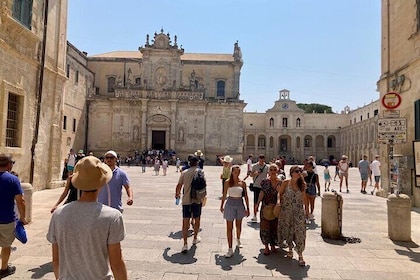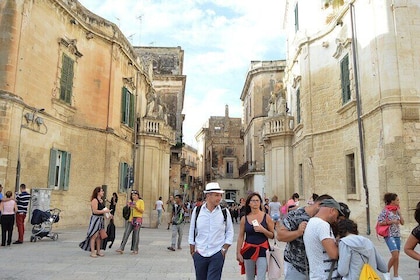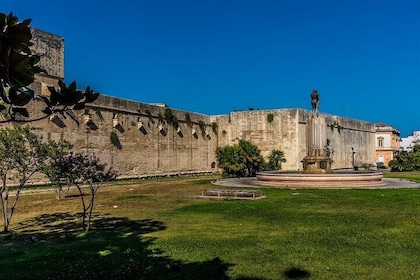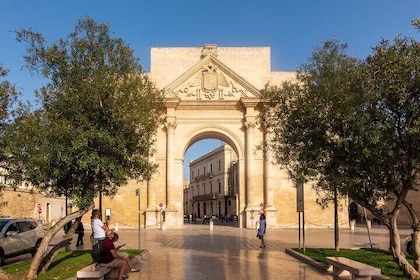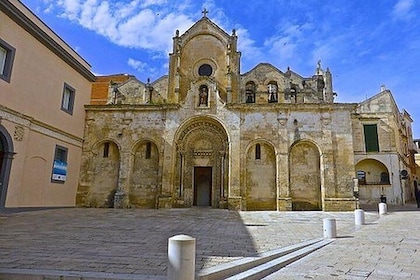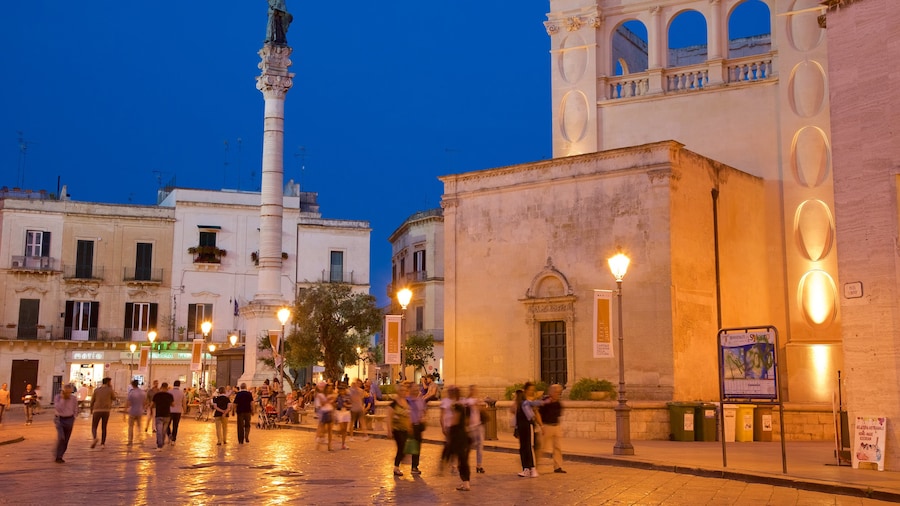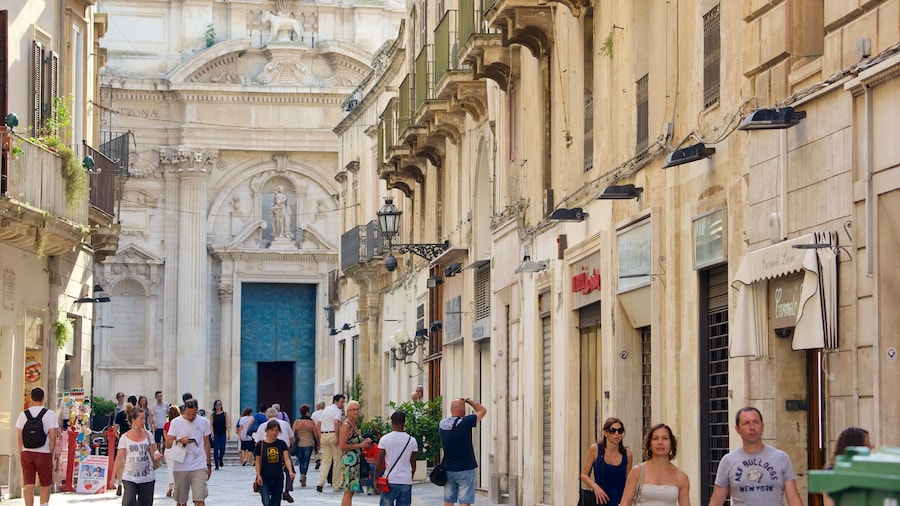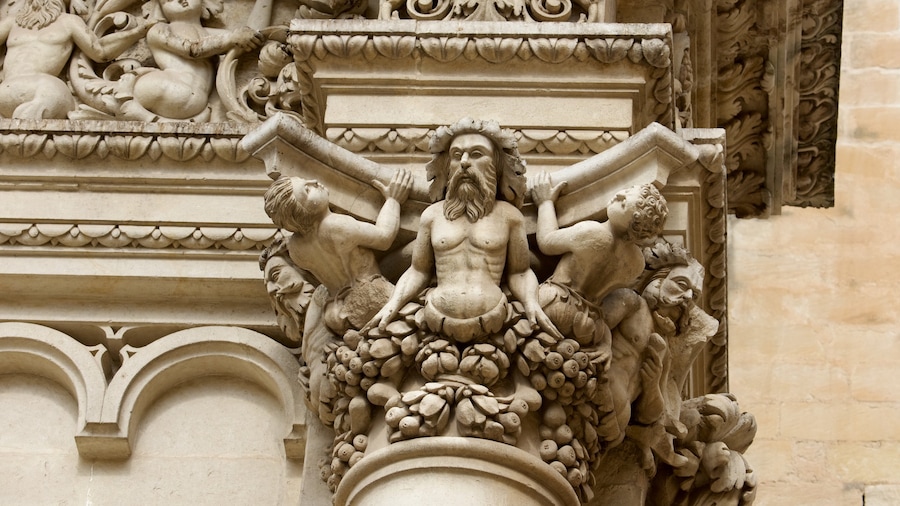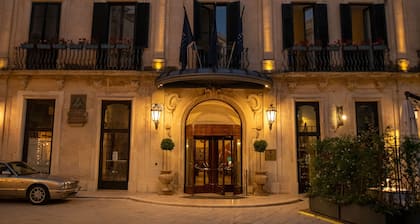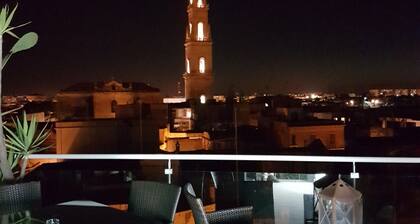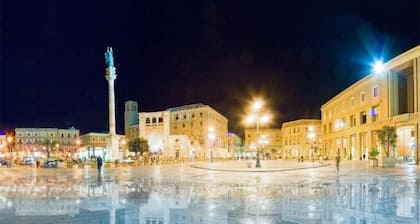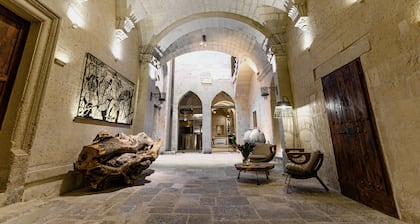Peer down into the Roman Amphitheater (Anfiteatro Romano) and envisage a time when large audiences would applaud gladiators, attend theatrical shows and watch live music performances. This ancient monument sits half-concealed beneath Piazza Sant’Oronzo. The Roman Amphitheater dates back to the A.D. 2nd century, when Lecce was a Roman settlement called Lupiae. Builders discovered it by chance in the early 1900s.
Stand on the street above the structure and admire its crescent shape, typical of a Roman amphitheater. The visible area is only a portion of the entire construction the remainder is still buried beneath the square. In its heyday, the arena had a double-tiered stand that is thought to have had a capacity for around 25,000 spectators.
Note how the arena contrasts with other landmarks located on Piazza Sant’Oronzo. Directly behind it is the Seat of the Palace, a 16th-century palace and exposition gallery with a blend of Gothic and Renaissance features. Attached to this building is the Chiesa di San Marco, which has a portal decorated with an allegorical frieze. Rising above the corner of the amphitheater is Colonna Sant’Oronzo, a monumental column crowned by a statue of Saint Orontius of Lecce.
It’s easy to reach this historic landmark on foot from major city attractions. Both the Holy Cross Cathedral and Piazza del Duomo are about a 5-minute walk away. Cafés line the street to the south of the amphitheater and are great to sit at and contemplate the activities of a bygone era.
The Roman Amphitheater is a public monument and free to visit at any time of the day. At night, street lamps elegantly illuminate the arena and square. Make inquiries at the tourist information office located on Piazza del Duomo.










